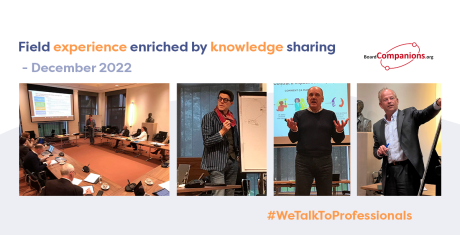The Statutory Auditor performs an essential mission for the Audit Committee. The work performed by the Statutory Auditor is an essential complement to the analyses carried out internally. The nature of its work and its professional independence make the Statutory Auditor a natural partner for the Audit Committee.
It is at this time of the year that the Statutory Auditor plans the year-end work and the certification of the accounts. It is important that the Audit Committee understands the Statutory Auditor’s working method and is critically involved in the reflection.
At this stage, several points of the audit method must be discussed:
- The scope of the audited entities: the companies included in the scope of the audit should represent a sufficient percentage of the consolidated revenues to allow the expression of an overall opinion on the financial statements of the company.
- The scope of the audit: most of the companies included in the scope are subject to a “full scope audit”; certain smaller entities are subject to a lighter analysis known as a “limited review”. It is mainly on the basis of the full scope audits that the Auditor forms his/her opinion.
- Materiality level: the materiality level is generally calculated as a percentage of EBITDA. It is used to calibrate the level of precision of audit tests and analyses. The level of materiality represents the granularity of the analysis, a criterion of particular interest to the Audit Committee.
- Sensitive and critical areas: the Statutory Auditor identifies a priori the sensitive areas that will be investigated and analysed in greater depth. Sensitive areas generally include the strategic and operational challenges of the company and its sector, as well as compliance issues.
- Balance sheet items whose value is estimated: Some balance sheet items are largely dependent on estimates and management judgments. Estimates must be made with discernment within the margins of appreciation defined by the accounting regulations.
- The communication plan: the Audit Committee wishes to be regularly informed of the progress of the work of the Statutory Auditor and not to be alerted late to any problems. The rhythm of communication is agreed between the Audit Committee and the Statutory Auditor.
The planning of the audit work is therefore an opportunity to strengthen the dialogue between the Audit Committee and the Statutory Auditor. This dialogue makes it possible to ensure that :
– the work and analyses of the Statutory Auditor are relevant to the company
– the points of attention of the audit are understood by the stakeholders
– the pace of communication is appropriate.




